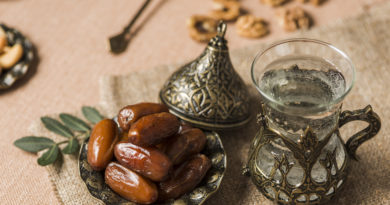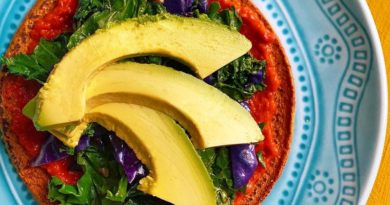What's Behind the “D”?
Why are vegan milks, yogurts, and ice creams designated as Dairy?
It used to be that the only non-dairy creamer was coffee-rich, a mixture of ingredients that was an unappetizing as it was unhealthy. Yes, you could buy boxed soy or rice milk, but it was hardly a substitute for the rich, creamy taste and texture of dairy milk. Still, whether you were lactose intolerant or wanted to have a milk-like product with a meat meal, these were the only options. For ice cream, you could get sorbet or, beginning in the 1980s, Tofutti. Gradually, the choices grew with other frozen desserts made from almond or coconut, but they were limited and hard to find.
Over the last few years however, there has been an explosion in options for non-dairy milks, coffee creamers, yogurts, and ice creams, with widespread availability. Made from nuts (cashews, macadamia, walnuts, almonds), coconut, hemp, rice, peas, oats, bananas, and combinations of these. All claim to be vegan and dairy-free, but are they? Interestingly, while some packages indicate that they are pareve, most have either a “D” (dairy) or “DE” (dairy equipment) kosher designation, with “D” being the most common.
Why would a vegan product be labeled as Dairy? It is not a new question. Coffeemate, a powdered non-dairy creamer, has always been designated as OU-D due to one ingredient sodium caseinate, which was less than 2% of the product. Although this is a milk derivative, as stated on the label, under federal labeling regulations, the product could be marketed as non-dairy. But, of course, it was not and could not be marketed as vegan (although the FDA has yet to issue regulations on that term). So what about vegan nut milks and other such products? Why do they carry the “D” designation?
What is the difference between “D” and “DE”?
A product is dairy if it contains a dairy ingredient, an ingredient that is designated dairy (even if it would other seem innocuous), or is made on dairy equipment that is not thoroughly cleaned between runs. For example, while it is well known that the original Oreo cookies are pareve despite the OU-D designation, a cake make with Oreos that was other pareve would receive a “D” designation. Kosher agencies take ingredients with kosher designations at face value. A “DE” designation is given when the product has no dairy or dairy-designated ingredients, but either has an “DE” designated ingredient, or is made on a line also used for dairy runs, the equipment is thoroughly cleaned for any dairy residue, but the equipment is not kashered between runs. If a product is processed on the clean equipment and is hot, it will be considered “DE”. If it is cold, it might be possible to designate it as pareve. Very few products are designated “DE,” though the number is growing. At first, Kof-F was the only major national hechsher to use “DE.” Others resisted it for years, claiming that consumers would be confused. However, the OU now gives this when possible and requested by the manufacturer. For example, Ben & Jerrys nut-milk based ice creams are designated “DE.”
According to Rabbi Avrohom Gordimer, Rabbinic Coordinator at the OU, these products may have a kosher designation of dairy, dairy-equipment, or pareve. In order to get a pareve designation for products made on a hot line (such as pasteurized beverages), the equipment must either be idle for 24 hours and then cleansed with hot water (at least 190°F or preferably 212°F) or a caustic solution at a high temperature, followed by hot water at least at 190°F. Normal cleaning procedures do not include water at 190°F or either the waiting period or caustic solution, and will result in either D or DE.
Why “D”? Some companies prefer it because it is easier. Cleaning for a pareve designation is more work and money, and non-kosher people do not generally care. They clean it enough for allergen warnings, but that is not sufficient for a pareve designation. As for “DE”, if they don’t clean the equipment enough for a particular run, or if they change procedures, they would have to change all the labels from “DE” to “D,” and it is just easier to keep a “D” label.
Rabbi Yehudah Rosenbaum of the Kof-K notes that sometimes the facility is shared by many products (known as a “co-pack” facility) and the kosher certification is for the facility itself, and is offered to every product produced there. If a facility is certified as Dairy, then all products produced there will get a “D”, regardless of the product itself. Another reason may be that the product is produced in multiple plants in different parts of the country. Most certification agencies adhere to a rule that every product in every plant must be certified, not just those in a particular plant, and the designations must be the same. So even if a nut milk company produces a pareve product in one plant, if another plant it gets a “D”, than all products will carry the “D”.
Other reasons are that there is an ingredient that while it seems innocuous, is designated as “D.” Examples include flavors and cheese cultures, but anything that is considered to add taste to a food or is necessary for the food to be produced. Similarly, if it is designated “DE” then the end product would also carry a “DE”. No one will go to the trouble of checking to see if the offending ingredient is really dairy, since this is time consuming and may change. To be designated pareve, all ingredients must be pareve and carry that designation.
The same principle applies to products made with Perfect Day whey and casein proteins. While these proteins are OU Pareve, products made with this milk protein substitute are often made on dairy lines or may contain a flavor or other ingredient that carries a “D” designation. Non-dairy cheeses also have an issue in that the kosher cultures on the market that are used for aged cheeses are mostly designated as “D” by the OK or OU. For those hoping for a real dairy protein cheese, ice cream, or just milk that is pareve, you will have to wait for a company willing to make a pareve run; otherwise these seemingly pareve products will likely be certified dairy.
What about nullification?
There is a principle that certain ingredients in small quantities can be nullified in a final product. So, for example, people ask that even if the equipment has a small residue of dairy that escaped cleaning, and somehow managed to find its way into a package of non—dairy milk or ice cream, the amount would be so small and the chances that the particular package I bought is that one with the tiny amount of dairy milk in it is extremely doubtful, isn’t this nullified by either the less than 1:60 rule or the compound doubt rule?
The simple answer is that, yes, in most of the described circumstances, if one were to consume such a product with meat than one does not actually violate a prohibition. However, this is only after the fact on an individual level. The nullification rules are not applied prospectively by kashrut agencies when giving a product a designation.
State of the Market
There are some companies whose products are pareve. Chobani makes some of its non-dairy products certified pareve, as does Elmhurst 1925 and Califa Farms . Arctic Zero frozen dessert is actually pareve, despite its OU-D designation (at least as of this writing) since the equipment is cleaned and the process is cold. Perhaps fans of the product can write to the company and ask them to switch to a pareve designation. Similarly, reaching out to companies like Silk, Blue Diamond, Forager, Oatly, Brave Robot, Graeter’s, or your favorite vegan product with a “D”, and asking them to please make their beverages, yogurts, and desserts pareve may help shift the market and bring more pareve choices to the consumer. Even if you are not kosher, pareve designation is additional assurance that there is no dairy in the vegan product.
[EDITOR’s NOTE: Arctic Zero changed their formula and now contains an ingredient that is designated dairy and so should be treated as such. 8/24/21]





Pingback: Kashrut Alert |